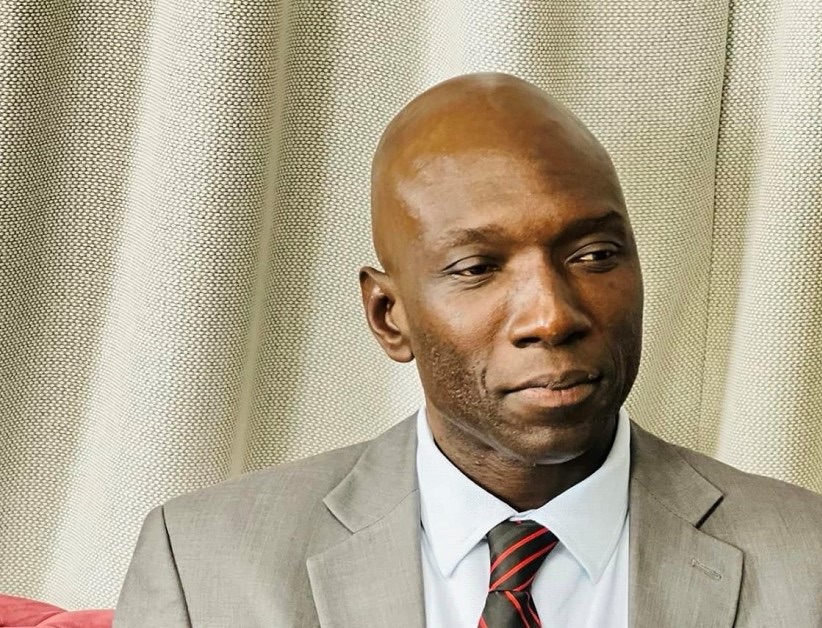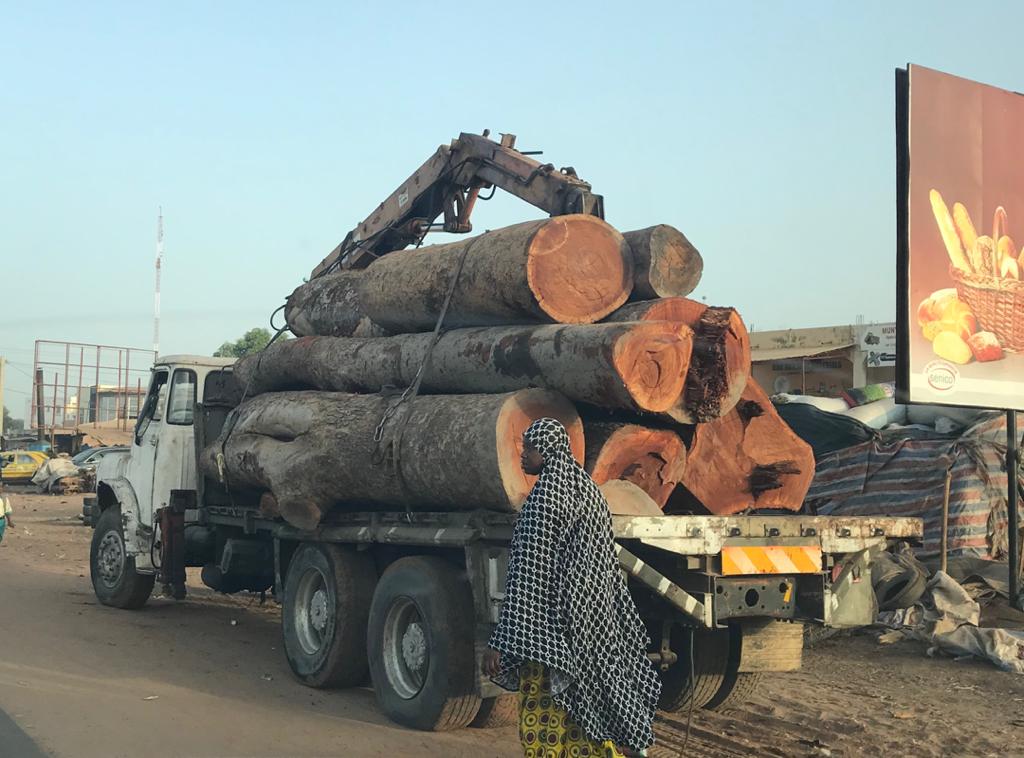Dr. Ousman Gajigo
One of the farmer associations in the country, the Gambia Farmers Union, recently visited the National Food Security Processing Marketing Corporation (NFSPMC). The NFSPMCused to be called the Gambia Groundnut Corporation. This is one of the examples of the Adama Barrow regime’s preoccupation with pointless name changes instead of engaging in substantive work. According to press reports, the officials of the Gambia’s Farmers Union praised the government for a “bumper harvest” in groundnut cultivation in the last rainy season. The NFSPC also claimed to have paid Gambian farmers unusually well for their groundnut harvests.
These claims are demonstrably false. It should be a serious matter for all Gambians to have the high-level officials claiming a bumper harvest when the reality is different. This is more thanjust being pedantic. The difference between a bumper harvest and a business-as-usual regular farming season is a very important distinction. This is because a business-as-usual farming season in The Gambia is not in a good shape and represents almost no progress for decades. A government that is serious about improving a sector would be diligent about the metrics used to judge performance.
A bumper harvest is an important achievement. So, what is meant by bumper harvest? It means an unusually large yield. It means that the level of production of a crop is far higher than what is usually achieved given the amount of land that is devoted to its cultivation. To claim whether we have a bumper harvest in a given year, we need to say something about the quantity of harvest of that year and how it compares to the long-term or regular average. This information is easy to access. Moreover, the country’s own Ministry of Agriculture not only has access to this information, they are also a source of it sincethey periodically supply it to the Food and Agricultural Organization (FAO) of the UN.
In their hyped-up claim about a so-called bumper harvest, the GGC/NFSPMC officials only mentioned the quantity of groundnuts supposedly marketed through them last season, which was 38,000 tons. There was no mention of the total quantity harvested in the country or the estimated yield for this past season. Given these missing essential pieces of information, how can these officials make a claim that we had a bumper harvest for groundnuts last season? It is true that we did not have a crop failure but the absence of a crop failure does not mean that there had been a bumper harvest.
Let me get a bit more specific. The average annual groundnut production in The Gambia over the past 10 years has been about 58,000 tonnes. Over this same time period, average groundnut yield in the country has been about 0.9 tonne per hectare. In this context, a bumper harvest would have to result in a production significantly higher than 60,000 tonnes. In terms of yield, the country would have had to reach a productivity level that significantly exceeded one tonne per hectare.
The last time The Gambia had a groundnut production exceeding 60,000 tonnes was in 2016 and that was before Adama Barrow came to power. The last time The Gambia had a groundnut yield exceeding one tonne was in 2012, which was five years before Adama Barrow came to power. In other words, it is an undeniable fact that there has not been a single bumper harvest in groundnut cultivation in The Gambia since AdamaBarrow came to power in 2017.
It gets worse. In fact, Adama Barrow fares quite unfavorably to Yahya Jammeh when it comes to groundnut cultivation in The Gambia. The average groundnut production in the 22-year rule of Yahya Jammeh was 99,000 tonnes per annum, and the average yield was 0.96 tonnes per hectares. Between 2017 and 2022 (the Adama Barrow years), the average groundnut production has been about 41,000 tonnes per year, and the average yield has been 0.81 tonnes per hectare. In other words, the level of annual groundnut production under Yahya Jammeh’s regime is twice the level under Adama Barrow, and more productive.
What is depressing about this comparison is that Yahya Jammeh had been neither a particularly great agricultural strategy, nor received the level of support in the sector that Adama Barrow’s government has. Admittedly he had some good ideas for agriculture but Yahya Jammeh was no sane person’s idea of a great agriculturalist. But the fact that his regime clearly outperforms Adama Barrow’s government in groundnut cultivation speaks volumes about the current sorry state of affairs.
More depressingly for the country, President Barrow seems to be oblivious of the agricultural realities, since he has repeated similar unsubstantiated claims about the agricultural sector in other settings. Indeed, the president was recently quoted as saying that farmers received the payments for their groundnuts “without undue prolong delay”? What alternative universe does president Barrow inhabit? Is it acceptable for a rural farmer to wait for weeks and months before receiving payments for their groundnut harvests when they have been working between June and December? Is it acceptable to wait for even for a few days when they had been threatened with serious consequencesshould they sell their produce to anyone other than GGC? The proper response for a serious leader would have been to demand accountability from the GGC/ NFSPMC and the Minister of Agriculture for the late payments to farmers despite the government having months to prepare.
It says a lot about the poor quality of advisors and officials that Barrow that surrounded himself with that he is apparently unaware about the fact some farmers waited for months to receive their payments. It is no wonder that senior officials feel comfortable reporting false claims about non-existent success stories. Not only is the president unaware of how badly his government is performing in agriculture, there seems to be no hope that he will eventually learn since he decided on surrounding himself with incompetent officials. And therefore, there is no hope for accountability under this regime.
The incompetency at the top of the Adama Barrow regime has an unfortunate consequence for voices claiming to represent farmers’ interests in The Gambia. Currently, there is a high degree of fragmentation among farmer associations in the country. This means that the Gambia’s Farmers Union is not the only organization claiming to represent farmers. Others include the Master Farmer Association and the National Coordinating Organization of Farmers Association in The Gambia (NACOFAG). There are other associations for livestock producers as well.
The proliferation of these associations is the byproduct of a government that does not take the agricultural sector seriously. After all, a government that is more interested in hearing about imaginary success stories rather than real challenges will encourage divisions among associations through favoritism.Associations that talk about actual terrible farming conditions in the country will be shunned while those that praise thegovernment will be given access and public stages.Unfortunately for the small farmers, a situation with dueling farmers associations will mean that their interests and concerns will not get the attention they deserve.
A serious government that is dedicated to the agricultural sector will want to hear about genuine farmers’ concerns, no matter how unpleasant. This would require having bottom-up associations at the ground level. An example of this could be village-level cooperatives that can be aggregated at the district, region and the national levels. From such a structure, an umbrella farmer association that speaks for farmers at the national level will have a real credibility and there will not be a need for multiple farmer associations competing for the attention of politicians. In The Gambia today, the small farmers in Wullior Niamina or Kiang or Fulladu or numerous other sub-regions do not know any of these multitudes of farmer associations that are supposedly representing them.





